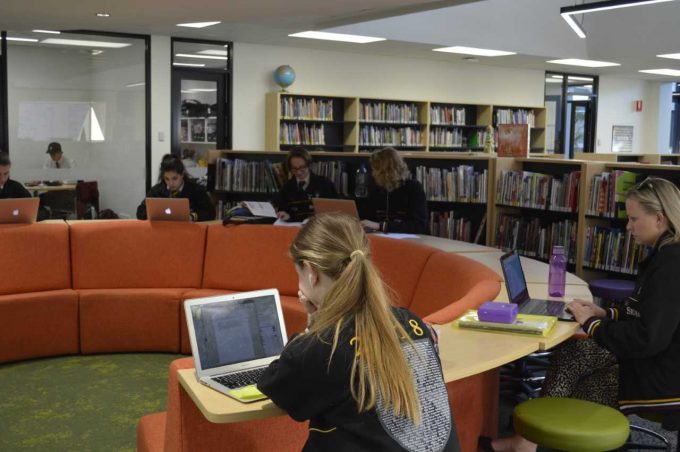Is teacher PD our only way forward?

In a paper titled ‘The quality teaching movement in Australia’, published in the Australian Journal of Education, Professor Stephen Dinham of the University of Melbourne’s Graduate School of Education (MSGE) wrote: “Concerns about teacher competence have abounded for decades. In Australia, there has been, on average, one major state or national inquiry into teacher education every year.”
Teachers are expected to do better with what they have, or as Professor Dinham pointed out in the same article: “The message is clear: do better with less.”
Research shows that teacher professional development (PD) improves learning outcomes for students. In their 2007 paper, ‘Reviewing the evidence on how teacher professional development affects student achievement’, published in Issues & Answers Report, Yoon et al. cited meta-analyses that indicated “average students would increase their achievement by 21 percentile points, if their teachers participated in quality professional development”.
In 2011, the Scottish government released a report called Teaching Scotland’s Future: Report of a review of teacher education in Scotland, in which it was asserted that “long term and sustained improvement, which has a real impact on the quality of children’s learning will be better achieved through determined efforts to build the capacity of teachers themselves to take responsibility for their own professional development, building their pedagogical expertise, engaging with the need for change, undertaking well-thought through development and always evaluating impact in relation to improvement in the quality of children’s learning. That is the message from successful education systems across the world.”
Laureate Professor John Hattie wrote in his 2009 book, Visible Learning that the single greatest determinant of student success within the school environment is the teacher. Politicians are adamant that spending on education is greater than ever before…and yet, improvement in students’ results hasn’t only stagnated; we are in decline.
I’m sure Professor Stephen Dinham is not alone in his assertion that “professional development is one of the biggest levers we have in terms of school improvement”. “I don’t think it is possible to change a school without professional development – that is changing what teachers know, can do and even value or believe,” the Melbourne professor told School News.
[pro_ad_display_adzone id=”6125″]If the single biggest determinant of student success is their teacher, and schools can’t change without teachers changing, it seems curious that teachers struggle to obtain the support they need to undertake PD.
It could be argued that all the money that has reportedly gushed into schools in recent years has been ill-spent – unless it has been spent on providing time, space and resources for teachers to undertake PD, but we all know it hasn’t.
In a study conducted by the Grattan Institute, called Making time for great teaching, Dr Ben Jensen and his team worked extensively with six schools which were all aiming to make time for extra professional development for their teachers. “Ideally,” Dr Jensen wrote, “teachers would have at least three extra school periods a week” for professional development programs. “Most of the time can be found by reducing the time teachers spend on ineffective professional development, staff meetings, school assemblies, extra subjects and extra-curricular activities.”
Educationalists are calling for more timetabled support for teachers to complete PD. In an article on The Conversation with a rather self-explanatory title; ‘Australian teachers get fewer training days than in other countries and turn to online courses for support’, MGSE research fellow Anna Dabrowski, wrote: “Interestingly, Australian teachers have fewer professional development days each year than in many other nations. And many are turning to online courses to fill the gap.” This is presumably due to the need to complete their PD in their own time, that is, at night after work.
Dabrowski also stated that, while “97 percent of Australian teachers participate in professional development activities, they have an average of nine days of professional development activities each year. That is just over half of the number reported by teachers in other countries”. Our teachers reportedly work “873 hours per academic year in primary school, compared to the OECD average of 790 hours,” the article continued.
While the sector waits for policy-makers to increase support for vital professional development, teachers will continue to squeeze their PD hours into their already bulging sack of tasks.
So, what’s out there?
Eligible subject areas for PD are as diverse as the skills required to teach effectively in an Australian school. There is considerable choice for school leaders, and plenty for teachers, including ‘teacher identified PD’, which covers formal and informal training, courses, workshops, seminars and activities you might attend either in or outside of working hours.
Eligible activities might include reflecting on teaching practice; planning for the delivery of professional learning; observing a colleague in action; or attending an education related talk or seminar at a museum, university or art gallery.
Formal course content ranges from self-organisation and lesson planning, to enhancing student wellbeing, courses in music education, or single practical skills like effective use of an interactive whiteboard. In many cases, university based courses can be claimed as eligible PD activity, either through teacher identified PD, or as a professional learning unit. State requirements do vary, however, so your state department is always your first step.
Often PD requirements can be satisfied by selecting single courses from education degrees at various universities. This approach allows teachers to upskill in areas that may not even have existed when they completed their initial teacher training. As universities are at the centre of research for these new developments, they represent a valid starting point.
Professor Stephen Dinham emphasised that this is why MGSE courses “are very much demand driven”. The objective is simple he said: “To provide educators with the knowledge needed to transfer cutting edge research into real world workplace skills.”
As online learning proliferates, institutions are mastering the finer points of online delivery, and their research is informing the content offered. The options are many and varied, and range from student wellbeing, to phonemic awareness training and new approaches like clinical teaching. Specialisations such as working with students on the autism spectrum, behaviour management techniques, and recognising the requirement for early intervention can begin as a PD enquiry, and subsequently lead to a full-blown career change.
Whichever the topic, whatever the content, the goal of professional development is to keep on learning. As research continues to support the benefits of PD for entire school communities, the continued call for increased allocation of time, space and resources for professional development seem justified.







